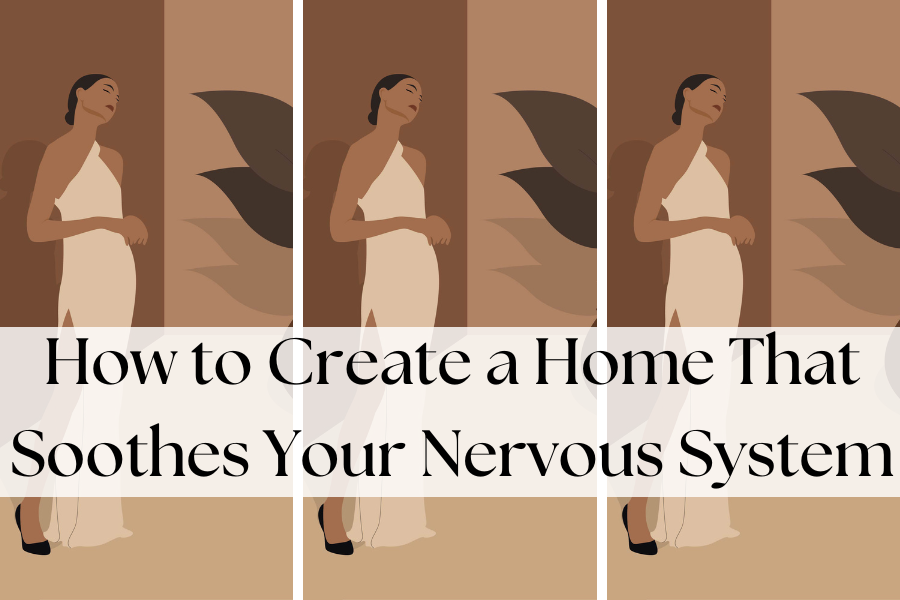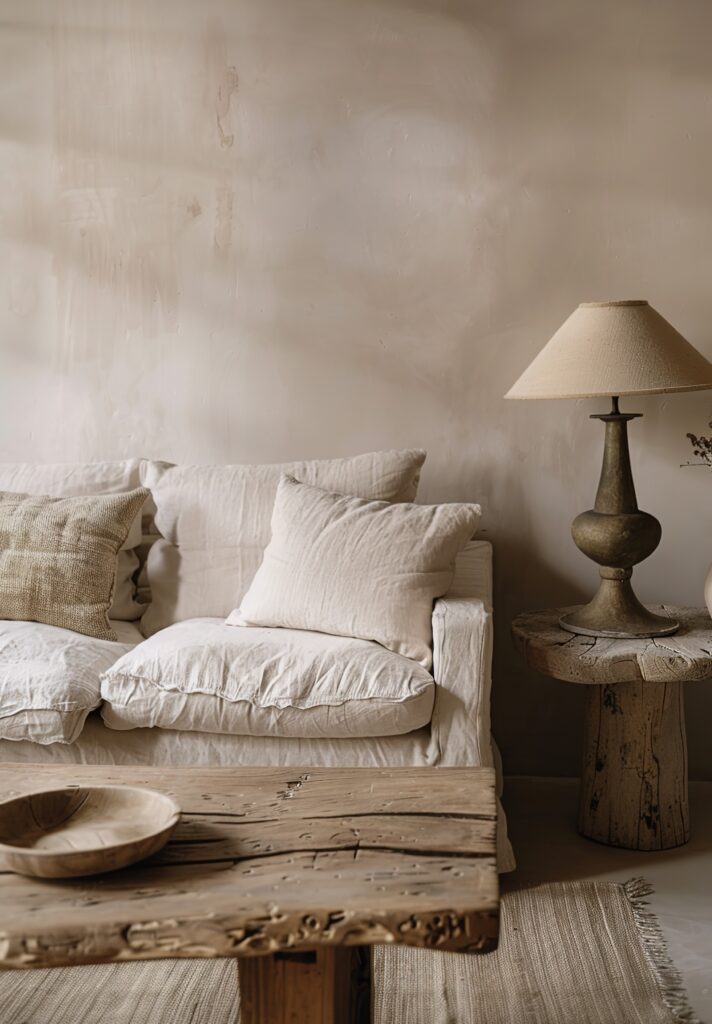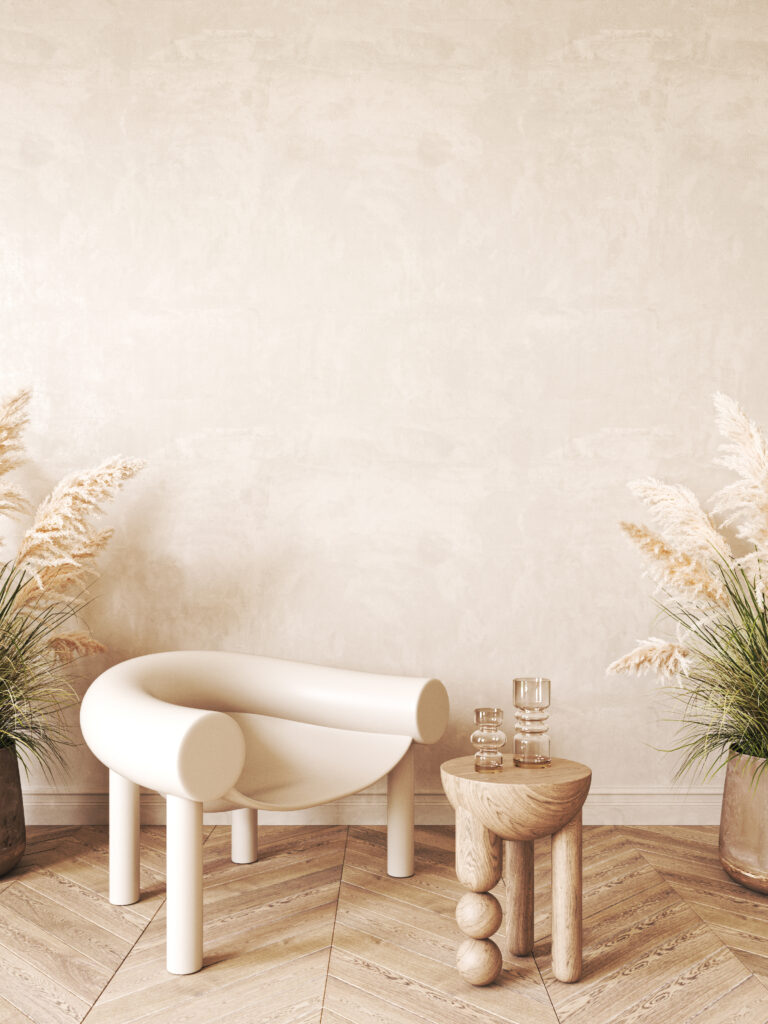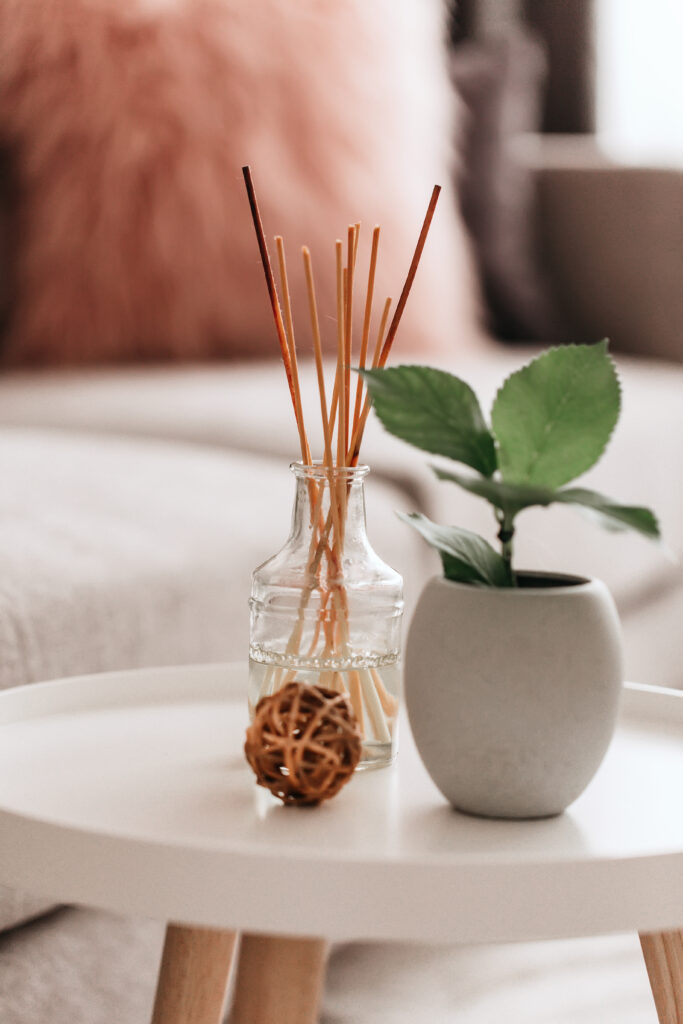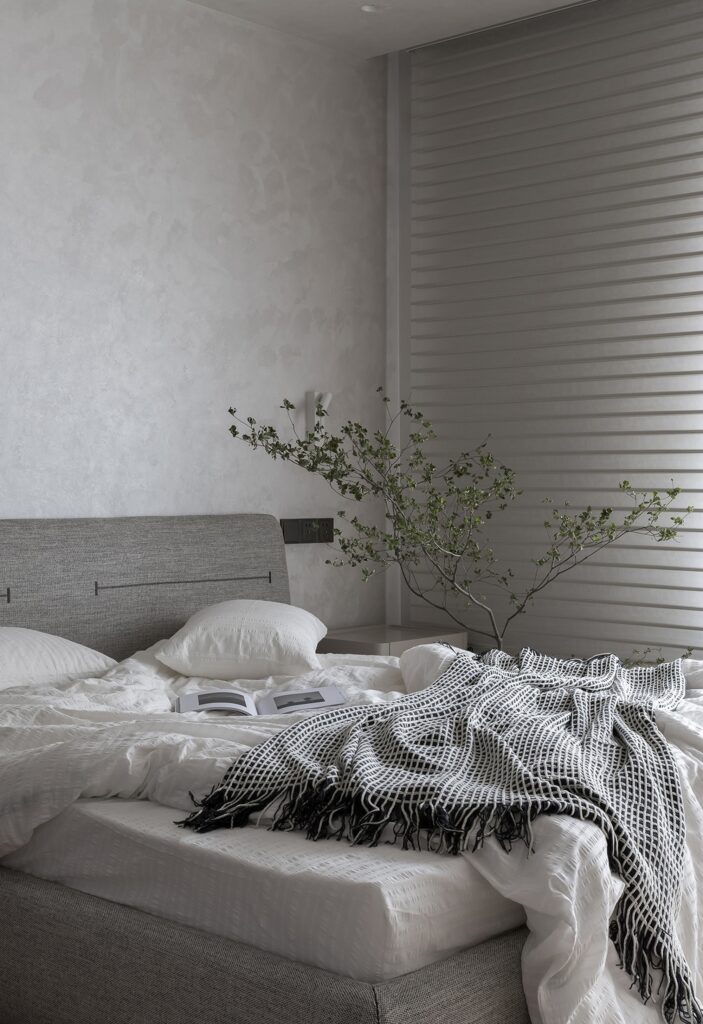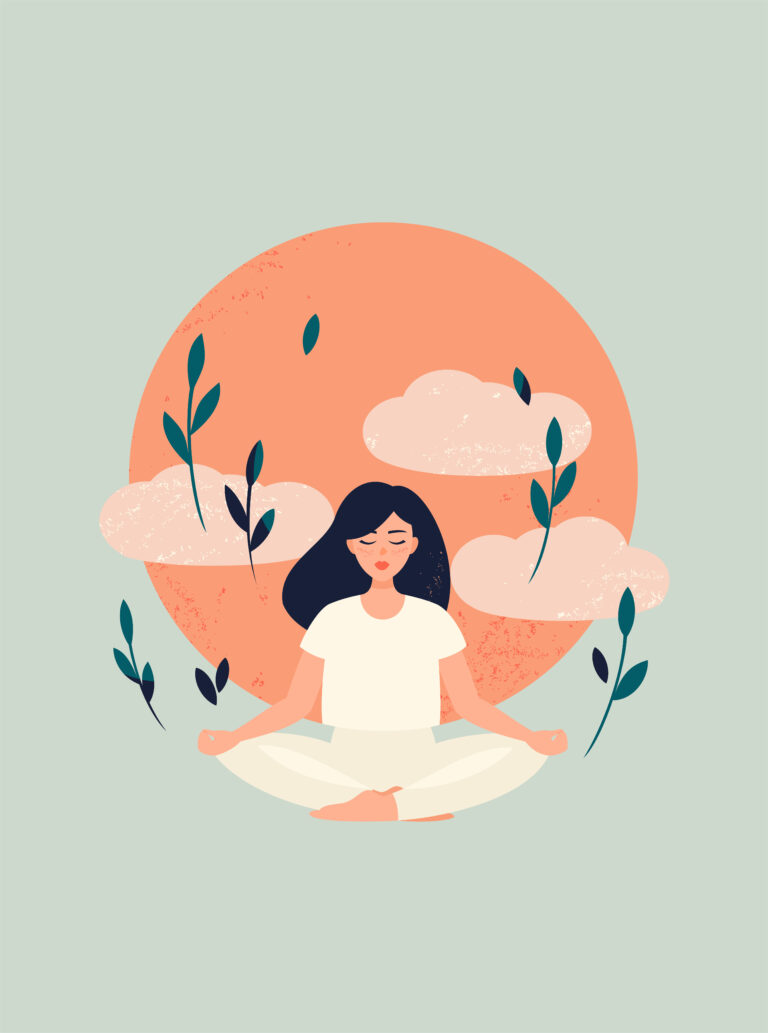With Love, Katie.
There were days when I’d walk into my own home and feel more overwhelmed than comforted. As a mom, all I could see was toys scattered across the floor, dishes piled in the sink because I never got to do the dishes, dusty corners that reminded me of what I hadn’t done, and a to-do list echoing louder than the softest part of me, like literally I had a list about my to-do lists.
I washed 2 days ago and the laundry basket is full again…like how is it even possible? (POV: I have two little girls)
But the more I leaned into slowness, healing, and holistic living, the more I realized something powerful: my home was talking to my nervous system. So, you need a calm home for a calm brain. But how?
Most days this is what I saw in my home: you’re behind, you’re cluttered, you’re not safe to rest, you need to do this, you need to tho that and so on…
I started wondering—what if our homes could feel like hugs? What if walking through the door could feel like an exhale? Like… oh I am home, finally!
So I made that my quiet mission: to create a space that didn’t just look pretty, but actually helped me feel calm, grounded, and well.
1. Why Your Nervous System Cares About Your Home
Your nervous system is always scanning your environment. Is this place safe after a long day at work?
If your home is visually chaotic, overly stimulating, or filled with unfinished tasks, your body might stay in a low-level stress state without you even realizing it. But your body can finally breathe when your space is soft, intentional, and grounded.
Otherwise, here is what you need to know: a messy home constantly sends subtle signals to your brain that something is unfinished. It creates visual and mental noise, which can increase stress hormones like cortisol, make it harder to focus, and leave you feeling stressed and overwhelmed—even if you’re not fully aware of it.
For women and mothers, who often carry the emotional load of the household, clutter becomes more than “stuff”—it becomes a weight. A tidy, simplified space doesn’t have to be perfect, but when your environment feels calm, your nervous system can finally exhale. So listen, you don’t need to throw away a lot of things, you just need to learn to organize and declutter beautifully.
2. Signs Your Home Might Be Stressing You Out
Maybe the signs will not be powerful and obvious, or you will not even realize that it is the clutter that makes you feel anxious. But there you go, If you hate being in the kitchen, it means that you need to change something.
A cluttered home can quietly elevate stress by overstimulating your senses and making it harder to relax. It often leads to mental fatigue, irritability, and even disrupted sleep.
Physically, you might notice tension in your shoulders, shallow breathing, or a constant feeling of being “on edge”—all signs your nervous system is under pressure.
- You feel a little irritable or heavy when you walk into certain rooms
- You constantly have the urge to “catch up” or tidy
- You avoid certain spaces because they overwhelm you
- You’re easily distracted or mentally cluttered at home
3. 7 Ways to Create a Soothing, Nervous-System-Friendly Home
These aren’t rules. These are gentle invitations from me to you. Don’t forget, I am a mom of two. We have toys, my sink is full again with plates… Choose what it will work for you. Leave what doesn’t. Start small and please do not feel overwhelmed with this list.
1. Declutter Slowly and Sensitively
Decluttering doesn’t have to be intense or overwhelming. You don’t have to do it all in a weekend. Start with one drawer or one shelf or one surface. Ask yourself: Does this item add calm or chaos to my life?
Even one cleared space can feel like a breath of fresh air. I know you do not really have time for decluttering, but trust me, this is the beginning. You might start small, but you will have a big result. You can do one drawer while your children are eating or playing.
With time, you will realize that a tidy home calms your mind by reducing sensory overload, it gives you back energy once spent managing “stuff” and it invites intentional and slow living, making space for what truly matters
2. Choose Calming Colors and Textures
Your eyes and skin are always taking in your surroundings. Opt for soft, neutral tones like cream, sage, dusty rose, or clay. Add cozy textures: linen, cotton, wool, wood, something that makes you feel closer to nature, if nature it’s your safe place.
-
Add a few hardy plants like pothos, snake plant, or peace lilies to your home.
-
Choose linen bedding, cotton throws, or woven baskets to layer texture and warmth.
-
Decorate with simple wooden frames, stone coasters, or clay pots for a slow, earthy feel.
Here is a list of colors which will make you feel relaxed and some witch can have a negative influence on your brain.
Relaxing, safe-feeling colors:
-
Soft blues: evoke calmness, serenity, and mental clarity (think about the sky and water)
-
Gentle greens: connect you to nature, renewal, and grounding, which looks good with natural textures
-
Earthy neutrals (beige, soft browns, clay tones): offer warmth, safety, and simplicity
-
Warm whites: feel pure, open, and soothing, and organize your home nicely, it won’t feel clinical
Colors that can trigger stress or unease:
-
Bright reds and intense oranges: can raise energy but also agitation if overused, so use them smart, not all the walls
-
Very dark greys or blacks: can feel heavy or enclosing without enough light balance, so maybe use it only on one wall
-
Neon or highly saturated colors: stimulate the senses and can overwhelm sensitive nervous systems
3. Soften the Sounds
Noise is a huge stress factor. Turn off harsh overhead lights and the TV when no one’s watching.
Choose calming playlists, nature sounds, or gentle instrumental music. Let silence be part of your home’s rhythm.
But you don’t need to listen to music at all, if your children’s voices are enough. You can just enjoy the silence between two screams to laughs. Let your brain breathe a little bit
4. Use Scent as a Signal of Safety
Scent goes straight to the emotional brain. Try diffusing lavender, vanilla, orange, or cedarwood. Light a beeswax candle. Open windows often, it is spring 2025 now, and I love how birds are everywhere singing, and the smell of our neighbours’ lilac is all over the place.
Create scent rituals that anchor your body in calm.
Gentle, calming scents to invite in:
-
Lavender: relaxation, sleep support, peace
-
Chamomile: softness, calm, emotional ease
-
Rose: heart-opening, nurturing, self-love
-
Cedarwood: grounding, strength, emotional security
-
Orange blossom (neroli): lightness, hope, renewal
Ways to use scent naturally:
-
Essential oil diffusers (choose pure, high-quality oils, really only buy two, but buy very clear ones)
-
Simmering pots with herbs and citrus peels on the stove (good idea for winter and autumn)
-
Beeswax candles scented only with essential oils (natural, give a little bit of a warm feeling)
-
Fresh bouquets of herbs like rosemary, mint, and thyme
Important: Avoid synthetic air fresheners—they often contain chemicals.
5. Add Natural Light and Life
Let sunlight in wherever you can. Open blinds. Wash your windows to let the sun in and maybe add a few houseplants.
These little touches reconnect you to the natural world—something your nervous system deeply craves.
The magic of natural light:
-
Open your curtains wide during the day.
-
Position mirrors to reflect sunlight deeper into your home.
-
Switch to softer, warmer lightbulbs to mimic the gentle light of sunrise and sunset.
6. Create a Rest Corner (Even a Tiny One)
Now please, don’t think about something big, only something small that fits your life. For example, if you love reading, for you it can be a chair with a blanket or a floor cushion by the window. If you love drinking tea in the afternoon alone or even with your husband, let it be a corner for tea and books. And if you are a yoga girl or someone who loves meditation, make sure you have a small spot to enjoy the process.
You don’t need a full room. Just a spot that invites you to pause and breathe, and maybe get closer to someone you love.
Make rest visible and accessible.
7. Reclaim Your Bedroom as a Sanctuary
Your bedroom should be the softest space in your home. Clear clutter from your nightstand. Use low lighting and make sure you keep electronics out if possible.
Let your bed feel like a place of retreat, not chaos. Slow down for evening, maybe add a slow-living evening routine too.
4. Your Home Your Safe Place
You don’t need a bigger home, expensive furniture, or Pinterest perfection. You just need a space that whispers: you’re safe now, your brain can calm down. Make it simple to make sure you are more present, more connected to yourself. Learn how to slow down your brain.
You will need space that reminds you to breath and that doesn’t overstimulate you: actually, a space that supports the life you actually live.
Just light a candle or open a window. Your body will thank you. and your heart will notice. And slowly, your home will start to feel like a place you can rest in, not just function in.

